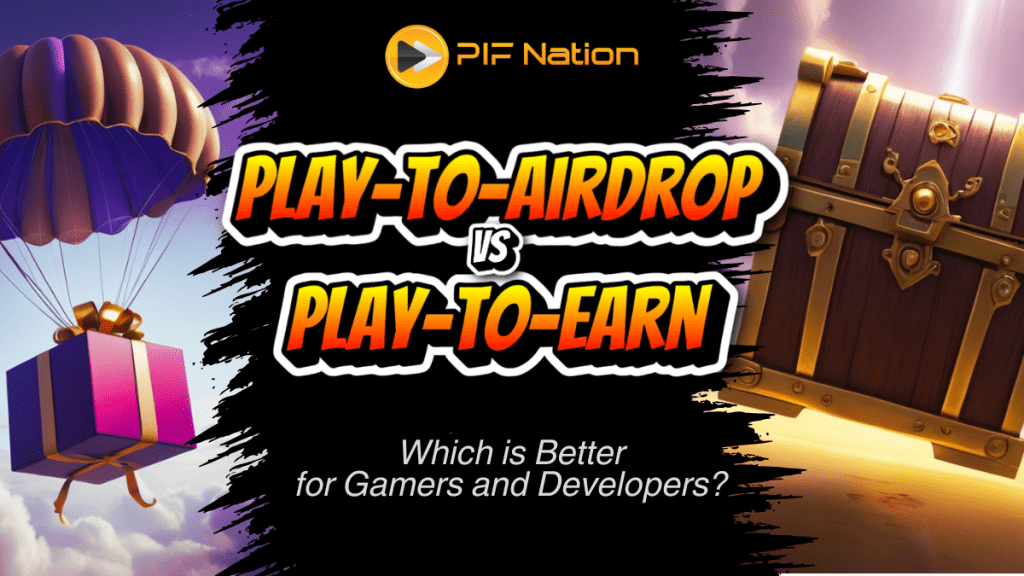The gaming world is changing fast. Now, instead of just playing to earn (P2E), there’s a new way called play-to-airdrop (P2A). This new approach is making games more fun and rewarding for everyone. PIF Nation, which used to focus on P2E, now helps games grow using P2A. Let’s dive into the battle between P2A and P2E to see which is best for players and game makers.
The Evolution of Web3 Games
Long ago, Web3 games were pretty simple. They didn’t look great and were easy to play. But over time, they’ve gotten much better. One big reason people like these games is the chance to win something valuable, like digital coins or special items. This is where play-to-airdrop (P2A) comes in. It’s a new way to win by playing games. Instead of getting prizes right away, players can win points. Later, these points can turn into surprises.
Need Help Making Your Game Big? Try PIF Nation’s FREE ASO Service!
What are Play-to-Airdrop and Play-to-Earn?
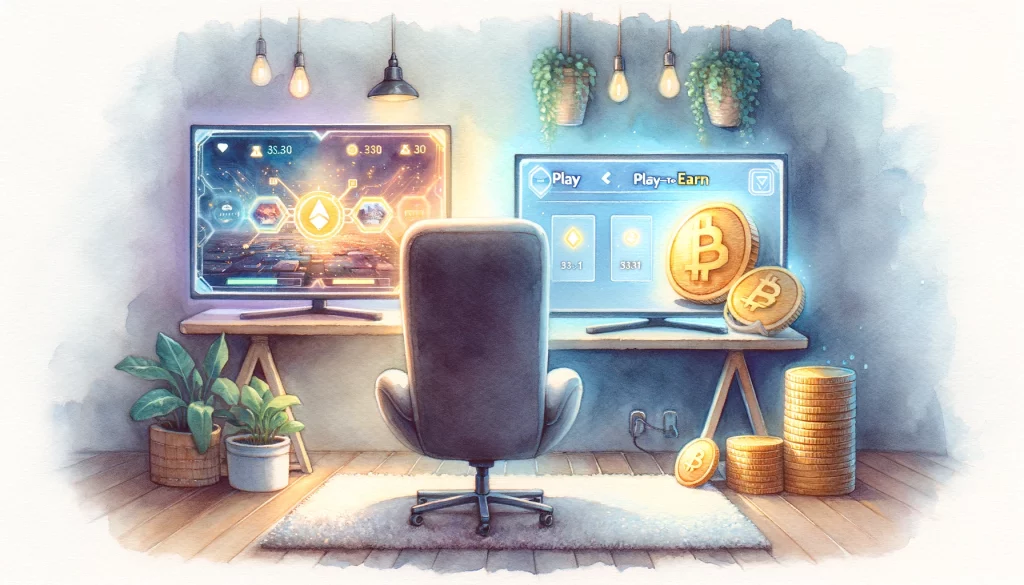
In the vibrant Web3 gaming world, two models have emerged, reshaping how players engage with games and reap rewards: Play-to-Airdrop (P2A) and Play-to-Earn (P2E). These models offer unique advantages for players and developers, but understanding their nuances is key to maximizing their benefits.
Play-to-Airdrop (P2A)

Play-to-Airdrop might sound complex, but it’s essentially about playing games and winning rewards later on. Unlike traditional reward systems, where you know what you’ll get and when, P2A introduces an element of surprise and anticipation. Players engage in regular gaming activities, competitions, or community events, and in return, they get airdropped tokens or in-game assets at certain milestones or events.
Play-to-Earn (P2E)

Play-to-Earn simplifies the reward process: play games, achieve specific goals, and earn rewards directly linked to those achievements. This model has gained popularity for its straightforwardness and transparency, allowing players to see the tangible benefits of their gaming efforts in real time.
Boost Your Game with PIF Nation's ICO Marketing Service
P2A vs. P2E: Gamers’ Perspective
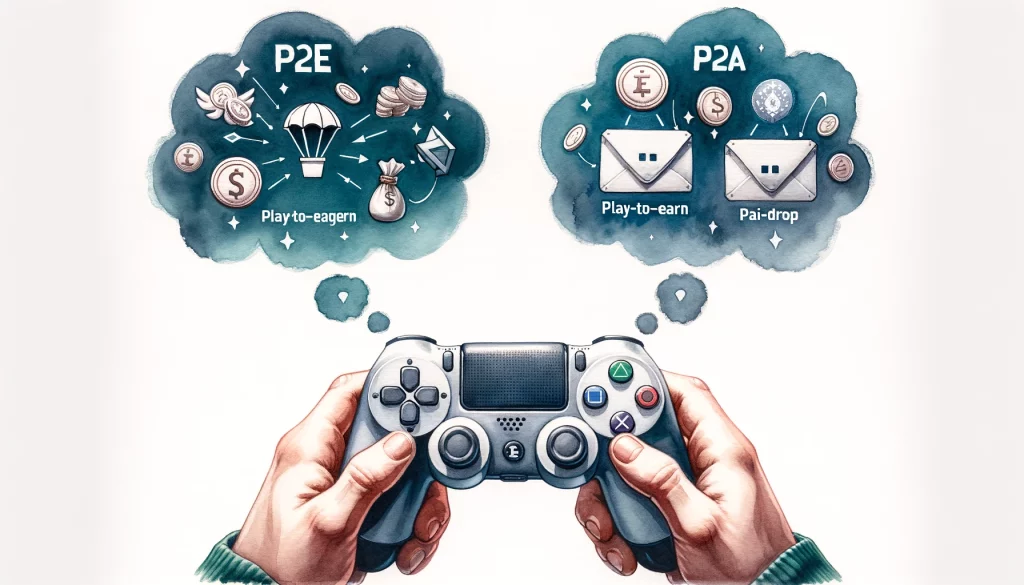
P2A and P2E offer distinct rewards and challenges, tailoring to different types of gamers. Let’s delve into the nuances of these models from a player’s perspective, focusing on their earning potential, game quality, and the sense of community and status they foster.
Earning Potential and Speculation
Play-to-Airdrop brings an element of surprise and anticipation to gaming. Unlike traditional reward systems, P2A does not guarantee rewards for specific achievements. Instead, it offers the potential for unexpected bonuses simply for playing the game. This model taps into the human love for surprises, making each gaming session potentially rewarding unpredictably. The speculative nature of P2A rewards means that players might speculate on the value of their airdrops, adding an extra layer of excitement to the gaming experience.

Conversely, Play-to-Earn provides a clear path to rewards. Players understand from the outset what is required of them to earn rewards, whether completing tasks, winning battles, or achieving certain milestones. This model appeals to gamers who appreciate a direct correlation between their efforts and rewards. The immediate gratification of earning through gameplay satisfies a desire for achievement and progress.
Game Quality and Experience

Both P2A and P2E can influence the design and quality of games. Developers may prioritize features that enhance the earning potential within a game, sometimes at the expense of gameplay depth or quality. Players must seek out games that maintain a healthy balance, offering a rewarding experience without sacrificing fun and engagement.
The type of monetization model can also shape the game’s community. P2A games often foster a sense of anticipation and speculation among players, creating a vibrant community atmosphere where surprises are always around the corner. In contrast, P2E games tend to build communities focused on achieving and earning, where players share strategies and celebrate each other’s successes. Both models create unique social environments that enhance the gaming experience.
Community and Status
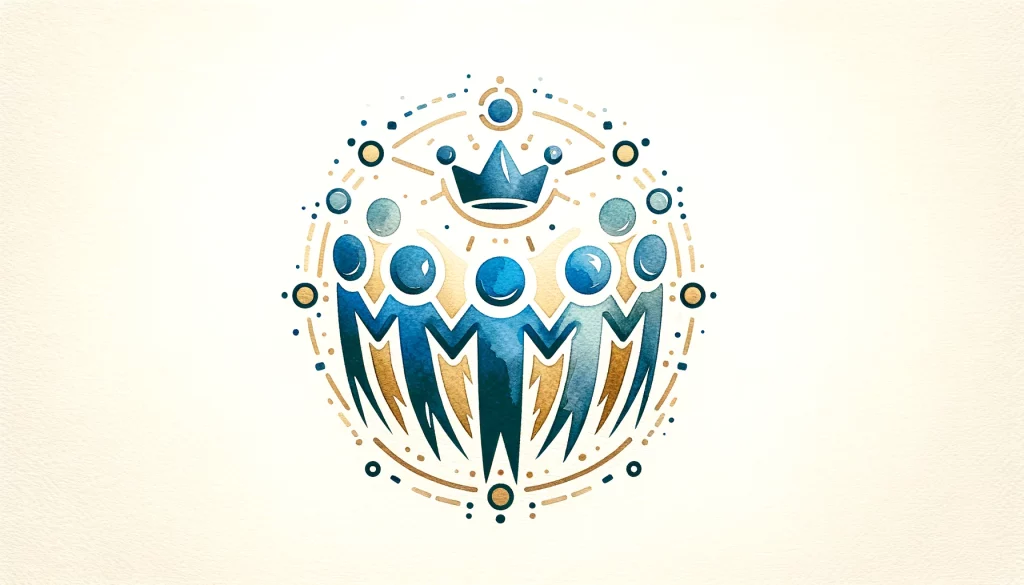
In P2A games, community status may be influenced by luck and active participation, with rare airdrops and engagement boosting a player’s standing. This creates a unique social dynamic where every player has the chance to shine, regardless of their skill level or time investment.
P2E games, on the other hand, often tie status to achievement and accumulation, rewarding players who dedicate time and effort to excel in the game. This can foster a competitive yet supportive community atmosphere where achievements are recognized and celebrated.
P2A vs. P2E: Developers’ Perspective
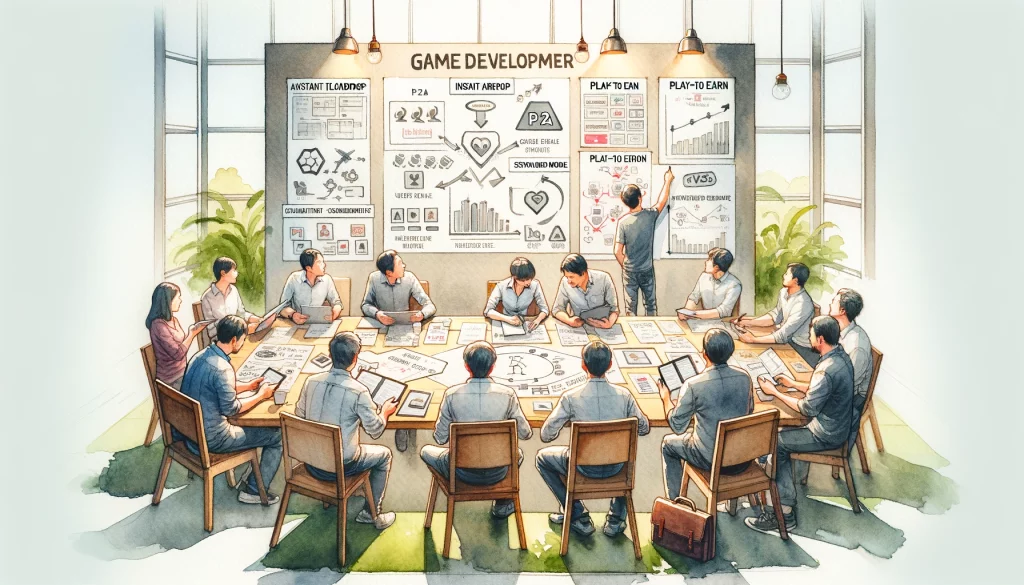
Here’s a deeper dive into game developers’ considerations with each model, aiming to unravel the complexities in a simple, straightforward manner.
Economic Sustainability and Flexibility
Developers favor P2A for its ability to maintain economic balance within the game. By controlling the timing and distribution of rewards, developers can prevent the market from becoming saturated with rewards, which could devalue the in-game currency and assets. This approach helps in preserving the game’s longevity and player interest.

On the other hand, P2E presents a more rigid framework. Rewards are directly linked to specific achievements, leaving less room for adjustment. If not carefully managed, this can lead to an imbalance, with too many rewards diminishing their value and potentially harming the game’s economy.
Flexibility is vital in game development, allowing developers to tweak reward mechanisms in response to how players interact with the game. P2A shines in this area, offering developers creative freedom to surprise players and keep the game environment dynamic. P2E, while more straightforward, requires careful planning to ensure that changes to the reward system do not alienate or confuse players.
Development and Maintenance Challenges
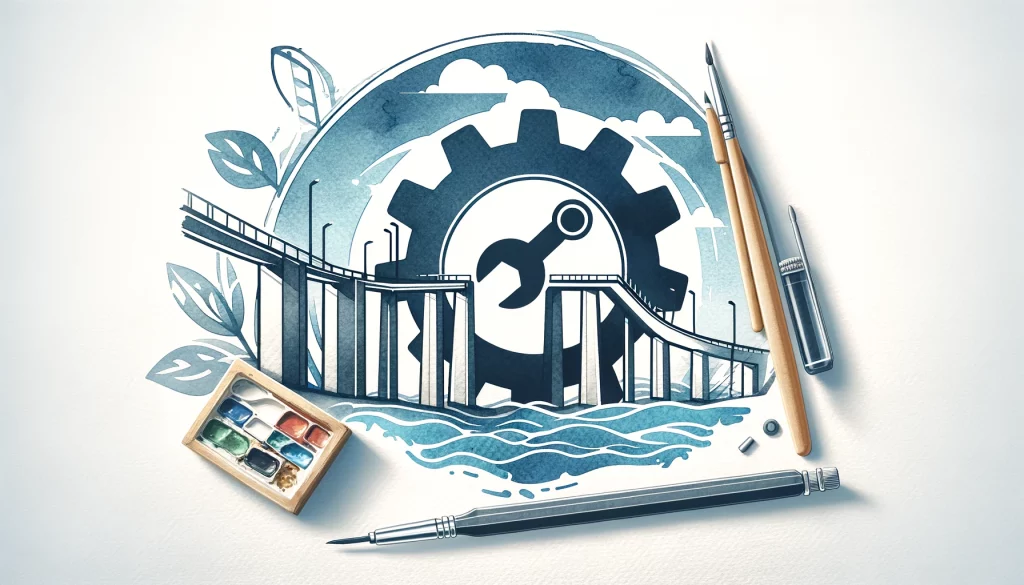
Creating a compelling game that players want to return to repeatedly involves overcoming various hurdles, from ensuring engaging gameplay to managing the technical infrastructure.
Both P2A and P2E models demand thoughtful design to balance fun and reward. However, the ongoing maintenance and evolution of the game’s features and reward systems can be more complex. Developers must continuously innovate to keep the gameplay fresh and appealing, irrespective of the monetization model chosen.
Behind every successful game is a robust technical setup that supports smooth gameplay and a reliable reward system. This includes everything from server stability to the secure and fair distribution of rewards, whether through airdrops in P2A or direct earnings in P2E.
Attracting and Retaining Players
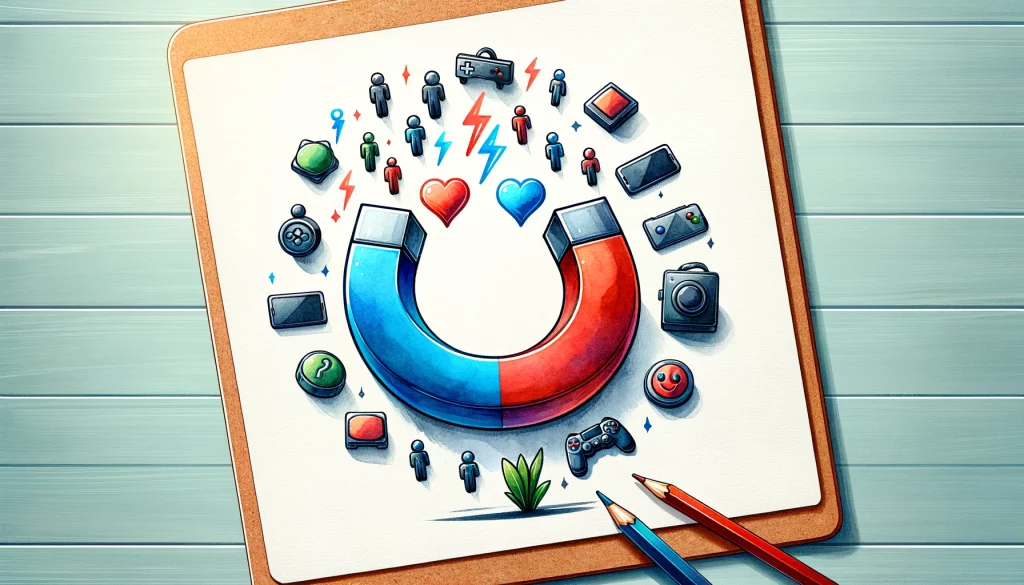
The choice between P2A and P2E also influences how games attract and keep players engaged. P2A appeals to those who enjoy the anticipation of unexpected rewards, fostering a community excited about what comes next. P2E, meanwhile, attracts players who prefer clear objectives and immediate rewards, offering satisfaction through visible progress and achievements.
To maintain player interest, developers must continually introduce new elements, whether through unexpected airdrops in P2A or new challenges and rewards in P2E. This requires a balance of creativity and strategic planning to ensure that the game remains engaging over time.
Ready to Overcome the Challenges?
Navigating the intricacies of game publishing, especially in vibrant markets like Southeast Asia, requires insight and strategy. Explore our comprehensive guide on the “8 Biggest Challenges of Game Publishing in Southeast Asia” to gain the knowledge needed to thrive. Dive into expert advice and innovative solutions tailored for success in this unique gaming landscape.
Benefits of Play-to-Airdrop for Gamers
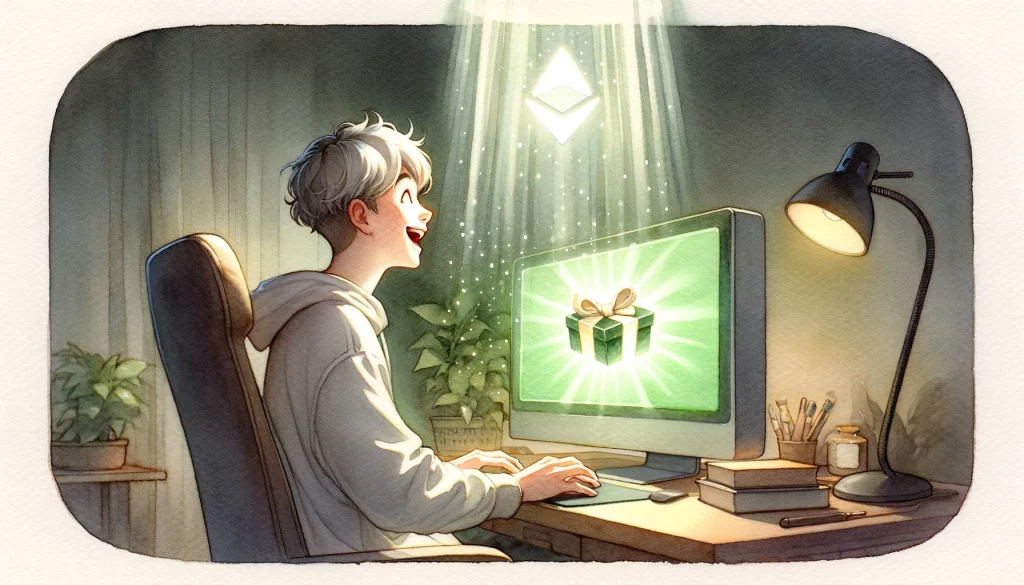
Let’s break down why P2A is becoming a favorite among gamers.
- The Excitement of the Unknown: One of the coolest things about P2A is the thrill of anticipation. Unlike Play-to-Earn (P2E), where you know what you’re working towards, P2A keeps you guessing. It’s like waiting for a surprise gift. This element of surprise adds a whole new level of excitement to gaming.
- Speculative Rewards: The rewards in P2A are often speculative, meaning they could increase in value over time. Imagine earning something today that’s worth a little, but it’s worth a lot more in a few months. That’s the kind of potential we’re talking about. It’s like investing in stocks, but you’re investing your time in a game.
- Welcoming More Players: P2A is not just for hardcore gamers. It’s for everyone. Whether you’re a casual player or spend hours gaming, P2A games have something for you. This inclusivity draws more people into the gaming world, expanding the community and making it more diverse.
- Next-Generation Gaming: We’re talking about games that look good, play well, and offer more than just the gameplay. These games tell stories, create worlds, and unite people. P2A is at the forefront of this new wave of gaming, making every game an adventure worth diving into.
Strategic Advantages for Developers
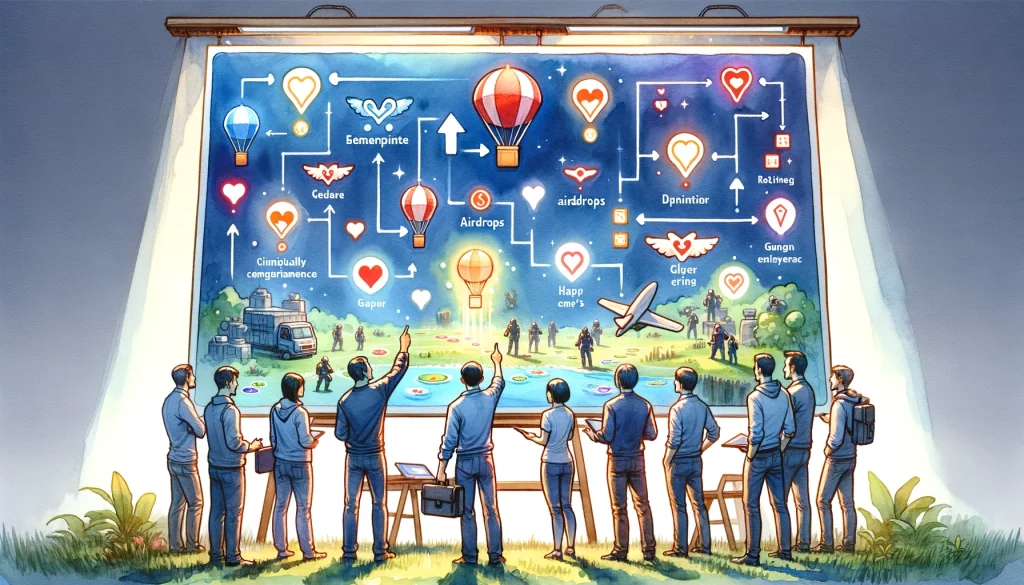
When creating games, developers have a lot on their plates. They need to consider making games fun, keeping players interested, and ensuring the game can continue financially. This is where Play-to-Airdrop (P2A) comes into play, offering some excellent benefits for the people making the games.
-
- Adapting to Changes: One of the best things about P2A for developers is how it lets them change things up as needed. If a game’s economy is having trouble, developers can adjust the rewards without upsetting the balance. This flexibility means developers can react to how players interact with the game in real time.
-
- Sustainability: With P2E, there’s always the risk of the game’s economy becoming unstable if too many rewards are given. P2A helps avoid this by offering rewards that don’t always have an immediate financial impact on the game’s economy. This approach helps keep the game fun and rewarding for a long time.
-
- Going Viral: Games that use P2A can quickly get popular. When players hear about the chance to earn unique or valuable rewards just by playing, they will likely tell their friends. This word-of-mouth can make a game go viral, attracting many players fast.
-
- Loyal Players: The chance to earn new rewards keeps the game exciting and gives players a reason to stick around. Plus, the community that forms around these rewards can turn players into fans, making them more likely to stay engaged with the game over time.
-
- Addressing P2E Challenges: While P2E focuses on giving players rewards immediately, P2A offers something different. It’s about the excitement of what could be earned in the future. This long-term perspective can make players more invested in the game, as they’re curious to see what rewards will come next.
Elevate Your Game with PIF Nation's Expert Community Management!
P2A vs. P2E: Conclusion
P2A might be the better choice for Developers if the goal is to build a long-term, engaged community around a game, focusing on sustainability and speculative growth. P2E could be more appealing for projects looking for quick growth and direct monetization strategies, albeit with higher risks related to economic sustainability.
For gamers, the preference depends on individual goals. Players looking for the thrill of speculation and potential high-value rewards may find P2A more appealing. In contrast, those seeking consistent, tangible rewards from their gaming time prefer P2E.
Ultimately, the choice between P2A and P2E hinges on developers’ and gamers’ specific goals, risk tolerance, and engagement strategies. A balanced approach, integrating elements of both models, could offer a more sustainable and engaging gaming experience in the long run.
Frequently Asked Questions
How can I participate in airdrop?
To participate in airdrop events, stay active in gaming communities, join game newsletters, and follow your favorite games on social media. Developers often announce airdrop events to engaged community members.
What's the meaning of airdrop in crypto?
In crypto, an airdrop refers to the free distribution of tokens or coins to the blockchain wallet addresses of active community members. It’s a strategy used by developers to reward and engage users.
How to get free airdrop coins?
Stay informed about upcoming airdrops by joining gaming and crypto communities, subscribing to newsletters, and participating in community events. Being an active community member increases your chances of receiving airdrop coins.
Do you have to claim airdrops?
Yes, in most cases, you need to claim airdrops by following the instructions provided by the game or platform. This may involve connecting a wallet, completing tasks, or verifying your participation.
Can androids get airdrops?
While “airdrop” is commonly associated with transferring files between Apple devices, in the context of gaming and crypto, Android users can also participate in crypto airdrops by using compatible wallets and following the participation guidelines.
Looking to expand your player base in Southeast Asia?
Discover one-stop solutions for game publishing in Southeast Asia with PIF Nation.

